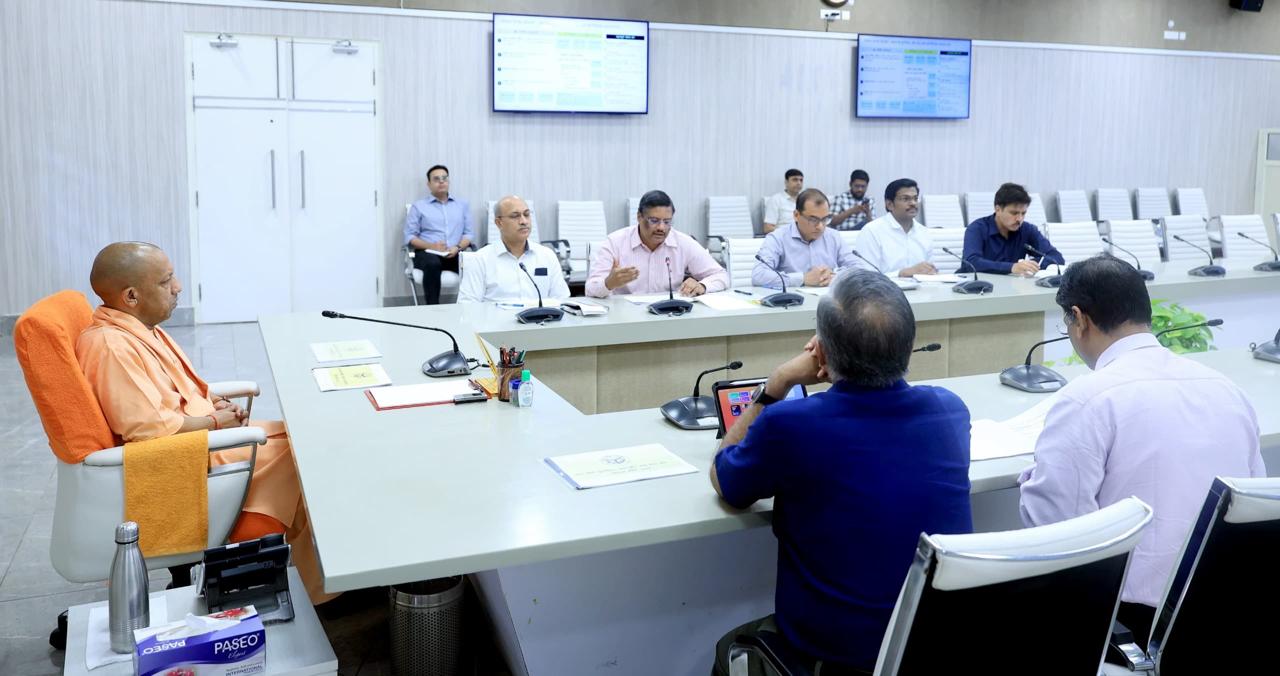 Early Times Report Early Times Report
Lucknow, Aug 1: Uttar Pradesh is taking decisive steps to position its footwear, leather, and non-leather manufacturing sector on the global map. Chairing a a meeting of the MSME department on Friday, Chief Minister Yogi Adityanath highlighted the state’s strong base—skilled artisans, raw materials, and industrial hubs like Agra, Kanpur, and Unnao—and called for a practical, results-driven policy to unlock its full potential.
While reviewing the draft of the Uttar Pradesh Footwear, Leather and Non-Leather Sector Development Policy 2025, the Chief Minister instructed officials to adopt a cluster-based development model as a core strategy. He emphasized the importance of clearly identifying regions in the state best suited for industry-specific development. He further stated that integrating production, design, research, and training on a single platform could not only attract large-scale investments, but also generate employment opportunities for lakhs of youth.
The Chief Minister stressed the need to develop key infrastructure like flatted factory complexes to offer modern, efficient workspaces for industrial units. Officials informed him that the proposed policy could generate around 22 lakh new jobs in the coming years—marking a potential turning point in Uttar Pradesh’s rise as a global hub for footwear and leather manufacturing.
Currently, India ranks as the second-largest producer and consumer in the world in this sector, with Uttar Pradesh playing a significant role. Over 200 operational tanneries are located in Kanpur and Unnao, while Agra is recognized as the ‘Footwear Capital’ of the country.
The Chief Minister emphasized that the policy should not only promote leather and non-leather footwear manufacturing units, but also extend special incentives to ancillary units producing components like buckles, zips, soles, insoles, laces, dyes, chemicals, heels, threads, tags, and labels. He also stressed support for units manufacturing specialised machinery for leather stitching, cutting, moulding, and production of non-leather safety shoes.
This integrated approach, he said, would help establish a complete and localized ‘design-to-delivery’ ecosystem within the state. Additionally, he highlighted the need for robust strategies for skilling, packaging, and marketing to enhance product quality and competitiveness.
The meeting also included a discussion on the proposed Uttar Pradesh Industrial Asthan Policy. Officials noted several challenges in the current system, including inefficient land utilisation, lease execution complexities, unauthorised mortgaging and subletting, and idle plots. The new policy aims to eliminate these hurdles by introducing a transparent, streamlined, and time-bound system. Plot allotment will be conducted via e-auctions or other transparent methods, with land prices determined area-wise. However, land rates for anchor units will be set by the state government.
Calling the proposed policy “practical and forward-looking,” the Chief Minister stated. “A clear, simplified, and accountable process—from land allotment to lease execution, construction, and production—would provide confidence to investors and catalyze industrial growth.”
He also suggested the adoption of a ‘lease rent model’ to ensure optimal utilization of limited industrial land, minimize capital expenditure for investors, and accelerate development.
To promote private industrial parks, the Chief Minister advocated for incentives such as capital subsidies, stamp duty exemptions, and electricity and logistics support, along with a single-window approval system. He directed officials to develop an integrated online portal for applications and disbursement of incentives to ensure a fully digital, seamless, and trackable policy implementation process. |
